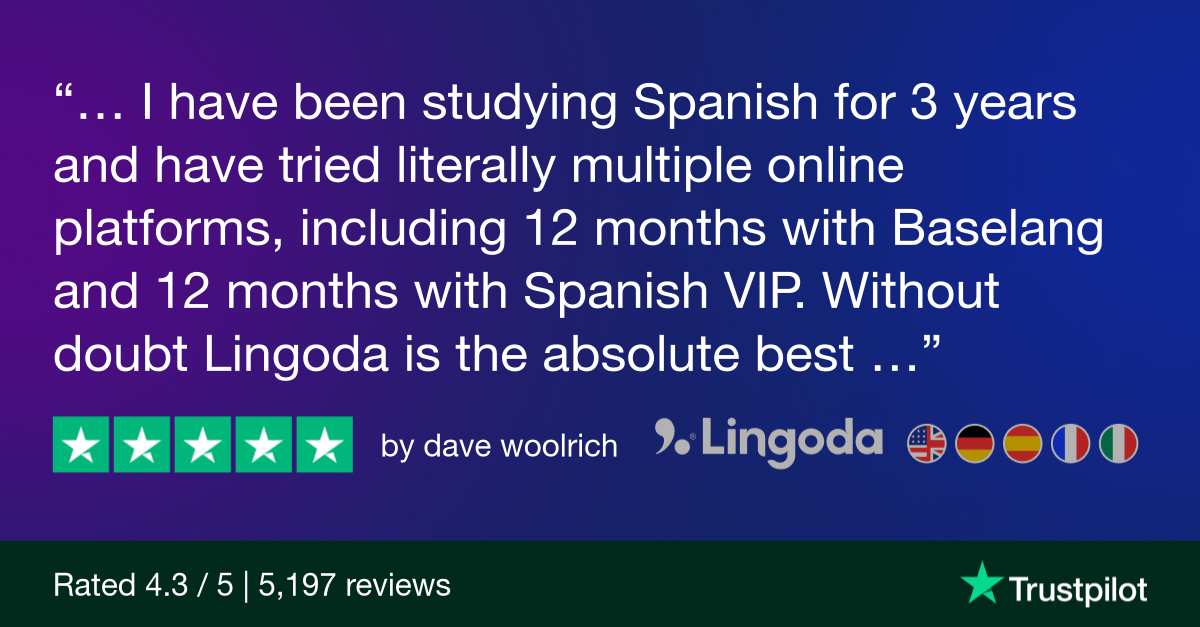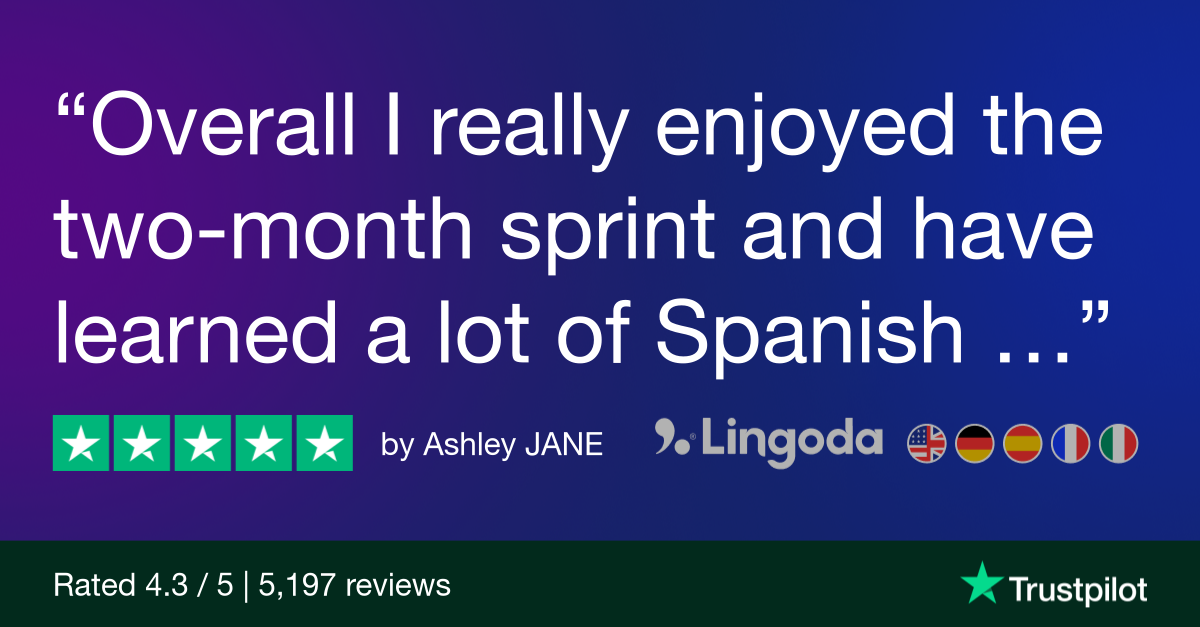Learn Spanish phrasal verbs: Usage and common examples

Phrasal verbs in Spanish are an important part of your journey to fluency.Knowing and using phrasal verbs in Spanish will make you sound more fluent with the language in a way that native speakers are. Why? Because the meanings of these verbs are impossible to directly translate from another language. For beginner to intermediate learners, tackling the challenge of los verbos compuestos en español (phrasal verbs in Spanish) will be worthwhile once you can speak Spanish more comfortably and without direct translations. Ready to learn more? Today we cover both the general usage and 30 common examples of phrasal verbs in Spanish.
- What are Spanish phrasal verbs?
- How do Spanish phrasal verbs work?
- 30+ Most common Spanish phrasal verbs and their meanings
What are Spanish phrasal verbs?
Phrasal verbs are multi-word verbs that require the entire phrase to understand the meaning. We mentioned that phrasal verbs in Spanish are not possible to translate directly from another language. Why is this?
Look at any number of examples of phrasal verbs in Spanish, and you’ll see that they are always made up of more than one word. In its most basic form, a phrasal verb combines a verb and a preposition or adverb (verb + preposition, verb + adverb).
With that second word added, the verb changes from its original standalone meaning.
English vs. Spanish phrasal verbs
To clearly understand phrasal verbs, examples in Spanish and English will make the concept clearer. Let’s start with the English verb ‘get’.
- Get - to receive; to come to have or hold something - I want to get bread rolls from the bakery.
Phrasal verbs with ‘get’ as the root verb:
- Get out - to exit a place or vehicle’ to remove
- Get in - to enter a place or vehicle; to insert
- Get over - to recover from an ailment; to overcome an emotional experience
- Get at - to reach or gain access to something; to imply
- Get around - to deal successfully with a problem; to be actively mobile
- Get off - to escape a punishment; to have audacity
We can probably list phrasal verbs using the root ‘get’ for hours. See how just a small sampling of phrasal verbs from one root verb can change the meaning entirely?
‘Get’ means to receive. ‘Over’ means to be at a higher level from something. But ‘get over’ does not mean to receive something while being high up. When used together, the two words create a new phrasal verb completely different from their individual–or combined meanings.
Next, look at these two sentences:
- I should get over this flu by Friday. I’ll definitely join you for Sunday brunch.
- I can’t get over my ex-girlfriend. She dumped me, but I will love her forever.
In the first sentence, ‘get over’ means to recover from a disease. In the second sentence, ‘get over’ means to overcome an emotional experience. See how just one phrasal verb ‘get over’ can have multiple meanings depending on the context? The same thing exists in Spanish.
Actually, you probably know a few phrasal verbs in Spanish already. Let’s look at one.
- Dejar (to leave) - Quiero dejar un libro para ti. (I want to leave a book for you.)
Phrasal verbs in Spanish using ‘dejar’ as the root:
- Dejar de (to quit) - Dejar de fumar es difícil pero vale la pena. (To quit smoking is difficult but worth it.)
Dejar means ‘to leave’. De is a preposition meaning ‘of’ or ‘by’. When combined, ‘dejar de’ does not mean ‘to leave by’. Instead, it takes on the new meaning ‘to quit’ something. You can use this phrase for everything from dejar de llorar (quit crying) to dejar de hacer ruido (quit making noise). See how useful phrasal verbs in Spanish are?
The power of phrasal verbs in Spanish
Phrasal verbs in Spanish, like the example above, are essential for fluency. Because they go beyond direct translation, understanding phrasal verbs deepens your comprehension of idioms. They open your mind to new Spanish vocabulary.
Using phrasal verbs in Spanish also helps you sound more like a native speaker. A major focus of language learning systems like Lingoda is to speak with confidence using the same natural language as native speakers. Phrasal verbs are a huge part of this real-life language usage.

Learn Spanish with Lingoda
How it works

Finally, having examples of phrasal verbs in Spanish to reference significantly enhances your performance in Spanish language levels testing. Higher marks on Spanish language exams make you a better job candidate in the future.
How do Spanish phrasal verbs work?
Now that you understand what phrasal verbs in Spanish are let’s look at how they work.
Common prepositions used in phrasal verbs
As mentioned, a phrasal verb in Spanish is made by combining a root verb with a preposition or adverb to create new and dynamic meanings. Which are the most common prepositions?
Prepositions commonly used for phrasal verbs
- de (of, from)
- en (in, on)
- con (with)
- por (by)
- para (for)
- a (to)
For a longer list of preposiciones (prepositions), review our full Spanish prepositions list. If you still second-guess yourself, refresh your knowledge of common mistakes with Spanish prepositions to avoid making mistakes.
Structure and grammar rules
To conjugate phrasal verbs in Spanish, use the grammar rules for the root verb as you normally would. The location of the preposition or adverb may move depending on the conjugation. Struggling with the rules for basic Spanish verb conjugation? Take 60 seconds to watch this short video of verb conjugation in Spanish as a review.
One tip to remember about Spanish verbs is how meaning can change with the tense. For example, when using the preterite vs. imperfect tense, words change meaning. This same change also applies to phrasal verbs:
- Carlos me cayó bien. (I liked Carlos the moment I met him./He made a good first impression.)
- Carlos me caía bien. (I have always liked Carlos. or I used to like Carlos–but not anymore.)
- Carlos me cae bien. (I like Carlos now.)
30+ Most common Spanish phrasal verbs and their meanings
It’s helpful to know a lot of phrasal verbs in Spanish. If you learn quite a few, you can intuitively use the most appropriate language for your real-life conversations. Without further ado, here are 30 examples of the most common phrasal verbs in Spanish.
Everyday use of phrasal verbs
Ready for some phrasal verbs in Spanish that you can use in daily conversation?
- Acabar de (to have just done something)
Acabo de leer este libro y no me gustó. (I just read this book and I didn’t like it.)
- Darse cuenta de (to realize)
Me di cuenta de lo difícil que es el examen de leyes. (I realized how difficult the law exam is.)
- Echar de menos (to miss someone or something)
¿Me echaste de menos, Bobi? Que tierno. (Did you miss me, Bobby? How sweet.)
- Caer en (to fall for, to end up in a situation)
No te caigas en las estafas de los taxis de Tailandia. Son obligados a prender el taxímetro. (Don’t fall for the taxi scams in Thailand. They must turn on the taxi meter.)
- Llegar a ser (to become)
Silvia quiere llegar a ser una barista de café. (Silvia wants to become a coffee barista.)
- Volver a (to restart an action again)
Volvieron a comer esquites después de pelearse con el vendedor. (They returned to eat corn after fighting with the vendor.)
Phrasal verbs for expressing emotions
Phrasal verbs in Spanish are often useful for expressing emotions about both people and situations.
- Alegrarse de (to be happy about)
Me alegra recibir la invitación al matrimonio de Carla.” (I am happy to receive an invitation to Carla’s wedding.)
- Enamorarse de (to fall in love with)
Me enamoré de Berlín en mi viaje a Alemania el verano pasado. (I fell in love with Berlin on my trip to Germany last summer.)
- Estar para (to be in the mood for)
Estoy para dejarlo todo e irme al Bosque de Chapultepec para un picnic. (I’m in the mood to stop everything and go to Chapultepec park for a picnic.)
- Estar por (to be about to, to be in favor of)
No te puedo acompañar. Estoy por irme a la casa de mi tía. (I can’t go with you. I’m about to go to my aunt’s house.)
- Pensar en (to think about)
Nunca pensamos en esta posibilidad. (We never thought about this possibility.)
- Soñar con (to dream about)
Anoche soñé contigo. ¿Qué puede significar? (Last night I dreamed about you. What could it mean?)
- Echarse a (to start suddenly)
Me eché a cantar cuando escuché mi canción favorita. (I broke out singing when I heard my favorite song.)
- Depender de (to depend on)
Ir a la fiesta depende del permiso de mi mamá. (Going to the party depends on getting my mom’s permission.)
Phrasal verbs for social situations
When it comes to social situations, there are plenty of phrasal verbs in Spanish that you can use to express yourself. Be careful: some of these phrases are more diplomatic than others.
- Caer bien/mal (to get along well/poorly with)
El novio de Laura siempre me ha caído mal. (I always got along poorly with Laura’s boyfriend/Laura’s boyfriend always rubbed me the wrong way.)
- Contar con (to count on)
El sábado a las 9 para karaoke? ¡Puedes contar conmigo! (Saturday at 9 for karaoke? You can count on me!)
- Reírse de (to make fun of)
Me gusta reírme de los pandas en el zoológico. (I like to make fun of the pandas at the zoo.)
- Casarse con (to marry someone)
Nancy se casó con su novio en enero. (Nancy got married to her fiancé in January!)
- Fijarse en (to realize or to notice)
¿Te fijaste en la prenda que lleva esa chica? Quiero comprar algo parecido. (Did you notice the outfit that girl is wearing? I want to buy something like that.)
- Hacer constar (to set the record straight)
Ana hace constar que no ha visitado este museo antes. (Ana sets the record straight that she has not visited this museum before.)
- Meterse en (to interfere with, to meddle in)
No te metas en problemas ajenos. (Don’t meddle in other people’s problems.)
- Meterse con (to get involved with someone)
No me gusta que mi prima se meta con ese chico. (I don’t like that my cousin is involved with that boy.)
- Responder por (to vouch for something or someone)
La jefa responde por todo el equipo. (The boss voucher for the whole team.)
Phrasal verbs for actions and movement
There are also plenty of phrasal verbs that convey action and movement.
- Quedarse sin (to run out of something)
Me quedé sin ganas de estudiar más. (I ran out of motivation to study anymore.)
- Darse prisa (to hurry up)
Date prisa, la película empieza en cinco minutos. (Hurry up, the movie starts in five minutes.)
- Dejar de (to stop doing something)
Al cumplir los 40 años voy a dejar de salir a los antros. Te lo prometo. (When I turn 40 years old, I will stop going out to the clubs. I promise you.)
- Llevar a cabo (to carry out or accomplish)
Mi papá llevó a cabo una fiesta sorpresa para mi mamá. (My dad held a surprise party for my mom.)
- Pasar por (to pick someone up, to collect something)
¿Puedes pasar por mí a las 6 en la peluquería? (Can you pick me up at 6 at the hair salon?)
- Tener que (to have to do something)
¿Tienen que pagar la membresía antes de ir al gimnasio? (Do they have to pay membership before going to the gym?)
- Tratar de (to try on, to attempt)
¿Ella quiere tratar de bailar salsa? (Does she want to try learning to dance salsa?)
Putting phrasal verbs in Spanish to work for you
Now that you know over 30 phrasal verbs in Spanish, can you see how important they are for fluency? Not only do phrasal verbs improve your Spanish vocabulary, but they help you to sound natural to native speakers. Plus, knowing a lot of phrasal verbs will give you the confidence to express yourself in real life. Lingoda can help you memorize what you learned today by practicing out loud in small group classes. If you enroll in an intensive Spanish course, be sure and bookmark this page. You’ll be glad to come back for a future study session.

Learn Spanish with Lingoda
How it works

















